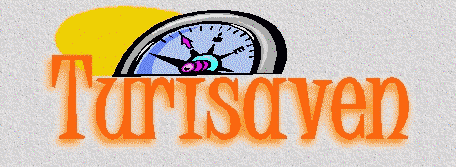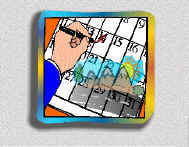|
ISLANDS DESCRIPTION FLORA AND FAUNA One of the greatest responsibilities which Ecuadorian people have acquired is the need to protect and conserve the integrity of the Galapagos Islands. Considered as one of the most important National Parks in the world, it is necessary that all efforts be directed toward protecting its wonderful flora and fauna. Entities such as the Parque Nacional Galapagos and the Charles Darwin Foundation carry into effect dedicated work to protect one of the most delicate and important ecological systems on Earth. It has been catalogued as a "living laboratory"; scientist, naturalist and ecologists look upon this region as the ideal for their studies. Eleven species have disappeared and it is probable that right now on this moment, the last individual of yet another genre dies due to the lack of appropriate measures on the part of man. It is not fair to deny any child the right he/she has of enjoying the gracefulness of the chaffinch, of the dolphin of of the cormorant. When the UNESCO declared the Galapagos Islands as Patrimony of Mankind and a Reserve for the Biosphere, it reinstated the commitment at an international level and it is we, Ecuadorian people and visitors who must correspond for such a thing to become true. Love of nature grows through contact, not through the cold sketching of species which no longer exist. NORTH SEYMOUR. - Swallow-tailed gulls; sea lions; blue footed boobies; yellow warbles; lava (dusky) gulls; red-billed tropic birds; Galapagos snake; land iguanas; frigate birds; palo santo trees; varied vegetation. HOOD (ESPAŅOLA). - Sea lions; mocking birds; marine iguanas; blue footed boobies; swallow-tailed gulls; albatross; petrels; finches; lava lizards; sally light-foot crabs; oystercatchers; Galapagos dove; blowhole etc. SANTA CRUZ (INDEFATIGABLE). - Academy Bay; Charles Darwin Research Station; tortoises, Darwin finches; lava gulls; herons; lava lizards; marine iguanas; Pto. Ayora Village; scalesia forest; mangrove trees; the tunnels, etc. SOUTH PLAZA . - Sea lions; Darwin finches; Opuntia cacti forest; sessuvium; swallow-tailed gulls; tropic birds; petrels; land iguanas; lava lizards; sally light-foot crabs; Audubon's shearwater etc. BATOLOME. - Pinnacle rock; mangrove region; volcanic landscape with spatter cones and lava tubes; swimming beach with some coral development and assorted marine life (penguins). ISABELA (ALBERMALE). - Linder volcanoes; penguins; flightless cormorants; noddy terns, crater with salt lake; marine iguanas; pelicans; Audubon's shearwater. FERNANDINA (NARBOROUGH). - Punta Espinoza; mangrove forest; recent lava flow with different lava formations (AA, ropery, pillow); hawks, blue-footed boobies, lava lizards; land and marine iguanas; fur seals; etc. SANTIAGO (JAMES). - Flycatchers; mocking birds; yellow warbles; oystercatchers; marine iguanas; pelicans; brown noddies; boobies; fur seals; sea lions; sally light-foot crabs; lava lizards; blue footed boobies; etc. GENOVESA (TOWER). - Basaltic lava flow; Opuntia cacti; palo santo trees; sea lions; fur seals; marine iguanas; storm petrels; gulls; shearwaters; tropic birds; masked and red footed boobies; frigate birds; etc.
|


